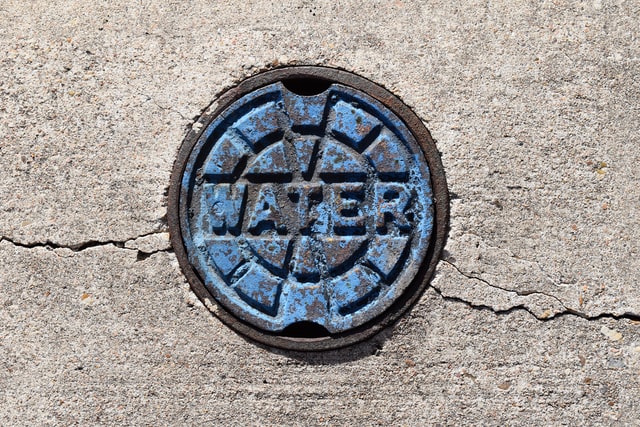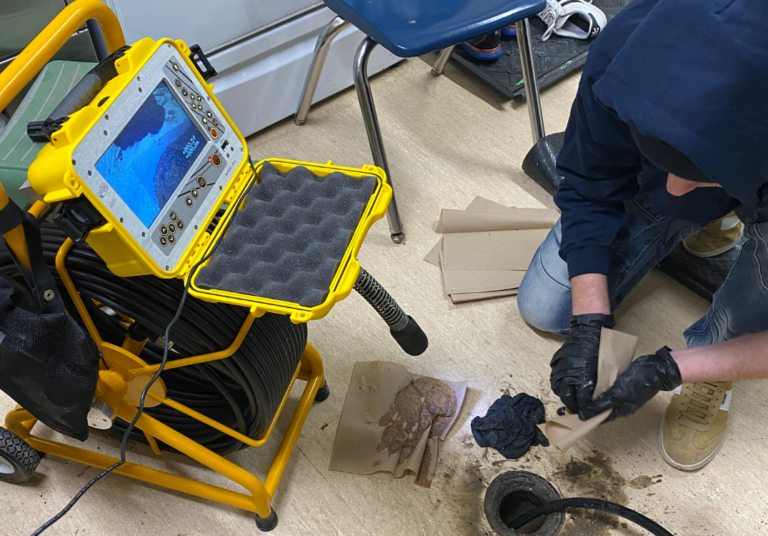Common Reasons Why Your Drain Could Be Clogging

Have you noticed that your water has been draining slower than usual? If so, there’s a chance your plumbing system is experiencing a clog. Over time, substances like hair, food, and grease can build up in your pipes, restricting water flow and causing potential damage to your plumbing system. Having handled numerous calls about clogged drains, we’ve learned that a few common culprits are usually to blame. Let’s explore what causes clogs and how you can avoid them.
Key Takeaways:
- Hair is the leading cause of clogs. Install a hair guard in your drains to prevent blockages.
- Toilet Paper and Feminine Hygiene Products are not as flushable as they seem. Avoid flushing large amounts or non-flushable items.
- Food scraps and grease can easily cause clogs in the kitchen. Dispose of food waste properly and avoid using garbage disposals for oily foods.
- Hard water can lead to mineral build-ups. Installing a water softener can help prevent this issue.
- Tree roots can infiltrate pipes in older homes, leading to blockages. Regular plumbing inspections can catch these issues early.
1) Hair
It’s normal to lose 50-100 strands of hair per day, so it’s no surprise that hair is the leading cause of clogged drains. When hair enters the drain, it can easily get tangled in the pipes, creating a blockage that prevents water from passing through.
How to prevent this:
- Install a hair guard: This simple device can catch the hair before it enters the drain, preventing clogs. It’s inexpensive, easy to clean, and works effectively to protect your plumbing.
2) Toilet Paper
Clogs in the toilet are often caused by toilet paper. While toilet paper is designed to break down in water, the materials used for even “flushable” varieties do not disintegrate quickly enough, causing a slow buildup in the plumbing system. Over time, this can result in blockages and even overflow issues.
How to prevent this:
- Be mindful of how much toilet paper you use: Use only the amount necessary for each use to avoid overwhelming the system.
- Try flushing with hot water: If a clog occurs, fill the toilet with hot water (about halfway) and flush. The added pressure can help push the clog through. Alternatively, use a plunger.
3) Feminine Hygiene Products
Feminine hygiene products like pads, tampons, and wipes are designed to absorb liquids. When flushed, these products absorb water in the plumbing system, swelling and causing blockages. These products are typically made from materials like cotton and nylon, which are not biodegradable and can severely damage the plumbing.
How to prevent this:
- Dispose of these items properly: Never flush feminine hygiene products. Dispose of them in the trash to avoid plumbing issues.
4) Food
Food debris is another frequent cause of clogged drains, especially in kitchen sinks. While it’s common for food scraps to fall into the sink while cleaning fruits or vegetables, some homeowners also use garbage disposals incorrectly. Grease and oils are the primary culprits here, as they solidify and build up in the pipes.
How to prevent this:
- Avoid putting food waste down the sink: Use a compost bin for food scraps instead of relying on a garbage disposal.
- Dispose of oils and grease properly: Never pour grease or oil down the drain. Allow it to cool and dispose of it in the trash.

5) Minerals (Hard Water)
Water containing high levels of minerals like calcium and magnesium, known as “hard water,” can lead to mineral deposits building up in your pipes. Over time, these deposits restrict water flow and contribute to clogs, which can lead to more severe plumbing issues.
How to prevent this:
- Install a water softener: A water softener removes the minerals responsible for hard water, helping protect your pipes from build-up and clogging.
6) Tree Roots
Tree roots can infiltrate older plumbing systems, especially in homes with trees close to the house. The roots seek water sources, and over time, they can crack pipes and grow inside them, blocking water flow.
How to prevent this:
- Preventive maintenance: If you live in an older home with trees nearby, regular inspections and maintenance of your plumbing system are crucial. In the event of tree root intrusion, pipe replacement may be necessary.

7) Water (Frozen Pipes)
Frozen pipes are a major concern during the winter months. When water inside the pipes freezes, it causes a blockage, which can lead to burst pipes and water damage. Several factors can contribute to frozen pipes, including poor insulation or a drop in temperature.
How to prevent this:
- Maintain consistent temperature: Keep your home at a steady temperature, especially in areas with exposed pipes.
- Insulate outdoor pipes: For pipes running outside the house or in unheated areas, use pipe insulation to prevent freezing.
- Trickle the water: If you suspect your pipes may be freezing, allow a small amount of water to run through them. This keeps the water moving and helps prevent freezing.
How Do You Know If You Have a Clogged Drain?
The earlier you detect a clog, the easier it is to resolve. Here are some common signs that you may have a clog forming:
1) Slow Draining Water
If your sink, shower, or toilet is draining slower than usual, this may be an indication of a partial clog. The longer you wait to address it, the worse the clog can get.
2) Gurgling Noises
Gurgling sounds from your drain indicate that air is trying to flow through the water, signaling a blockage. While this may not be an immediate emergency, it’s a good sign that a clog is on the way.
3) Foul Odor
Clogged drains can trap organic matter and bacteria, which lead to unpleasant odors emanating from the pipes. If you notice foul smells around your drains, it’s time to investigate further.
4) Low Water Pressure
When there’s a blockage, it can affect the flow of water, causing weaker water pressure. If you notice this happening in multiple fixtures, a clog may be to blame.
What to Do If You Have a Clogged Drain?
While some clogs can be fixed with DIY methods like using a plunger or draining hot water, others may require professional help. If you’re unable to clear the blockage, it’s best to call a plumber.
What we offer:
- Camera Inspections: We can inspect your plumbing system using specialized cameras to identify the exact cause of the clog without causing damage to your pipes.
- Water Jetting Services: Our professional water jetting services clear out gunk and debris from your pipes, ensuring they stay clean and functional for longer.
Don’t let a small clog turn into a major disaster. Contact us today to ensure your pipes stay clear and your home’s plumbing remains in top shape!
FAQs
Install hair guards, be cautious about what goes down the drain (especially grease and non-flushable items), and use a water softener to prevent mineral buildup.
While they may provide temporary relief, harsh chemicals can damage your pipes over time. It’s better to address the cause of the clog directly or consult a professional.
If your plumbing is old and you’ve noticed slow drainage or recurring clogs, tree roots could be the cause. A plumber can perform a camera inspection to check.
If you suspect a frozen pipe, you can attempt to thaw it gently with warm towels or a hairdryer. However, it’s safest to contact a professional plumber to avoid the risk of the pipe bursting.
For older homes, an annual plumbing inspection is a good idea. For newer homes, every couple of years should be sufficient, especially if you’re experiencing recurring clogs or other plumbing issues.
